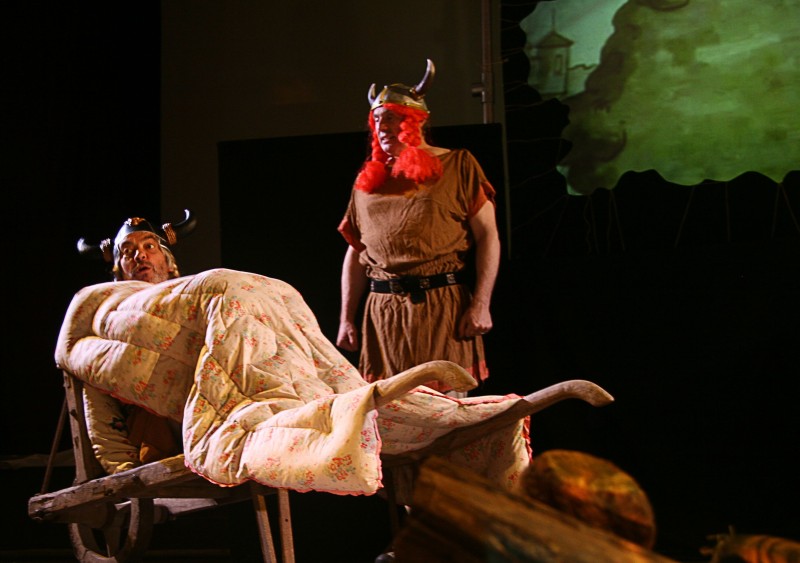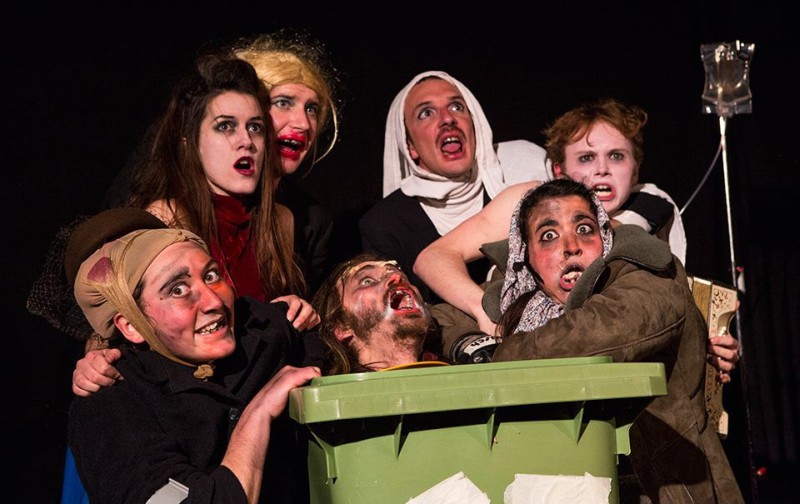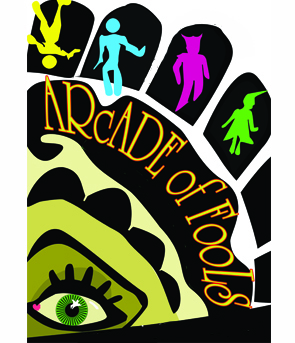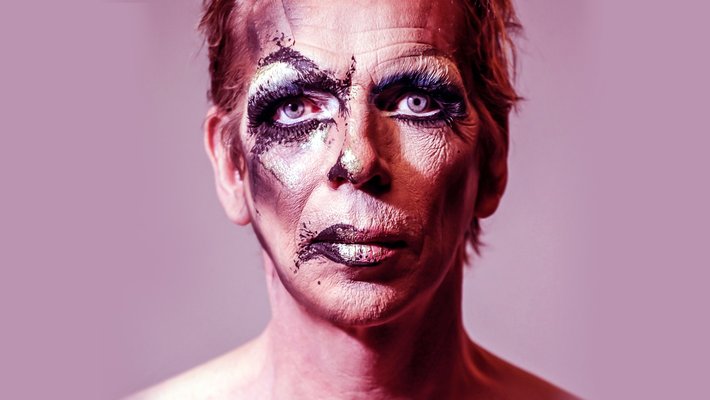David Hoyle is an experience to be had at least once in a lifetime: an avant-garde cabaret artiste from Blackpool with a sonorous voice and a virtuoso ability at audience interaction.
The pre-show pop music is mixed with a narrative discoursing like a political manifesto, and its combination of frivolity and vitriol sets the tone for the show. Hoyle is a consummate and eminently watchable comic entertainer, full of amusing quips, ticks, and winning cabaret routines. There is also a clear current of passionate political subversion that frequently erupts onto the surface.
He arrives to the strains of the ‘2001 – a Space Odyssey’ soundtrack, wearing a little black dress marked ‘Fragile’, with shiny stars ornamenting his arms, and grotesquely applied make-up. He also apparently has very bad teeth, and claims he was the model for the tobacco packet photo. From this onstage persona, it seems he’s lived a life of indulgence, decadence and difficulty. He is somewhat alarmed to be appearing on a Wednesday at 7pm, but claims ‘If you’re living your life correctly your weekends will be meeting in the middle’. He states that he is ‘fascinated by anyone who hasn’t topped themselves’, and there is a genuine sense of fascination and compassion for the people in the audience, despite the gloriously savage way he sets about two gentlemen talking too loudly.
Occurring a few days after the re-election of the Tories, he makes frequent assertions of the fascistic nature of the government, and incites us all to ‘Kill all people in authority’. Of course, outrageousness is part of the appeal and hilarity of his ‘anti-drag’ persona, but it’s clear his political conviction is wholly authentic, not just an affectation aimed at amusement. When he states that Cameron wants to make a stratified society seem natural, and that mental health problems are social constructions perpetrated against people with a deep need for love, he makes no attempt to arrive at a punchline.
A good percentage of the show is spent in conversation with members of the audience during which, like a spiritualist medium, he often claims to know aspects of their life stories: ‘Considering what you went through last year, I’m very proud of you.’ It’s hard to tell what material is prepared and what is improvised. Presumably, he’s riffing off a wealth of material developed over the years, but it comes across as spontaneous invention. His improvisational skills are also evident when he sings a song based on audience suggestions, which he does with a good cabaret voice.
Whilst this is a highly accessible performance, his avant-garde heritage is evident in the strange sound collages that augment his cabaret songs, for example, ‘You make me love you’ accompanied by the sounds of seagulls and an MRI scanner, and another accompanied by a soundscape recorded during a trip to the Arctic.
He occasionally speaks to his assistant Nick in the booth at the back, asking for time-checks and suggestions about what to do next, and having this Responsible Other allows him freedom to indulge in his flights of fancy. There’s a dance-along birdy song, and also does a wonderfully funny rendition of The Smith’s ‘Heaven Knows I’m Miserable’ in the style of Shirley Bassey. In this sense, his Blackpool roots seem clear – he’s cabaret performer as personality-in-the-room, as if Uncle David has shown up to the working man’s club, got up in a dress and is singing karaoke show tunes. However, this persona is clearly the result of a consummate professionalism (built on years working the Live Art and alternative cabaret circuit, and in particular through his long association with Duckie – the post-queer performance and events collective who tag themselves as ‘purveyors of progressive working class entertainment.’) and throughout the experience one has little doubt we’re in very good hands.
It’s certainly a show to attend with friends, and for many must form the basis of a very good night out. Not only is it frequently very, very funny, but also truly inspiring. At the end, he paints a picture of a French woman from the audience whilst we listen to a Big Brother-esque monologue, this gradual denouement preparing us for transition back out into life outside the tent – yet somehow positively changed.
 This adaptation, directed by John Wright, of the popular children’s stories created by Oliver Postgate and Peter Firmin is performed in a jovial pantomime style, with plenty of silly puns and sight gags amongst the storytelling. The four performers each function as narrators and also play several parts using puppets and quick costume changes. Nogbad the Bad is rendered as a typically enjoyable villain, inducing hisses and boos, whilst Noggin himself is a perfect fit as the well-meaning, cynicism-free young king full of adventure. The two older performers especially set about their roles with an air of relaxed and seasoned playfulness, like master craftsmen whose efficient use of expressions and gestures make it enjoyably effortless to watch.
This adaptation, directed by John Wright, of the popular children’s stories created by Oliver Postgate and Peter Firmin is performed in a jovial pantomime style, with plenty of silly puns and sight gags amongst the storytelling. The four performers each function as narrators and also play several parts using puppets and quick costume changes. Nogbad the Bad is rendered as a typically enjoyable villain, inducing hisses and boos, whilst Noggin himself is a perfect fit as the well-meaning, cynicism-free young king full of adventure. The two older performers especially set about their roles with an air of relaxed and seasoned playfulness, like master craftsmen whose efficient use of expressions and gestures make it enjoyably effortless to watch.



